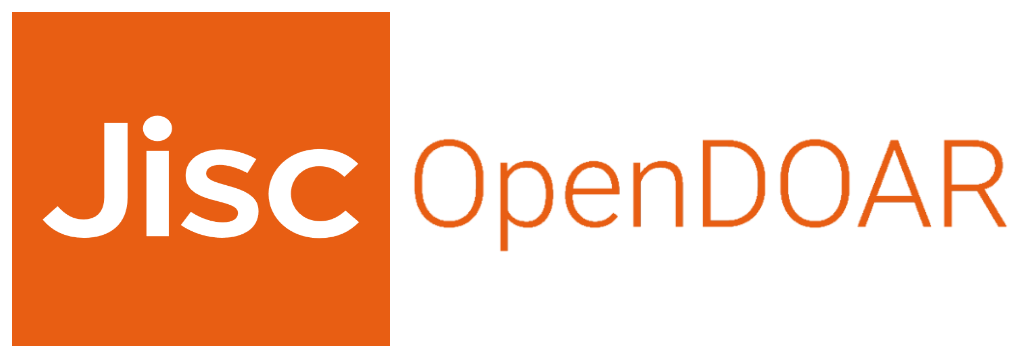| dc.contributor.advisor | Chavarro Portillo, Bibiana | |
| dc.contributor.advisor | Guerrero Guerrero, Martha Inírida | |
| dc.contributor.author | Contreras Martínez, Laura Katherín | |
| dc.date.accessioned | 2024-09-19T17:23:35Z | |
| dc.date.available | 2024-09-19T17:23:35Z | |
| dc.date.issued | 2024 | |
| dc.identifier.uri | https://repositorio.universidadmayor.edu.co/handle/unicolmayor/7054 | |
| dc.description.abstract | La lepra es una Enfermedad Tropical Desatendida y una neuropatía periférica no traumática, causada por M. leprae y M. lepromatosis. La respuesta inmune innata del huésped, controlada por varios genes, juega un papel importante en la determinación de la susceptibilidad a la lepra incluso antes de la infección inicial con el patógeno. Estas variantes se han observado en poblaciones de diferentes zonas endémicas a nivel mundial. | spa |
| dc.description.tableofcontents | Tabla de Contenido
1. INTRODUCCIÓN 12
2. MARCO TEORICO 14
2.1 Enfermedad de Hansen 14
2.2. Agente Causal de la lepra 15
2.3. Epidemiología de la lepra 16
2.4. Características clínicas de la lepra 17
2.5. Inmunología de la Lepra 18
2.5.1. Inmunidad innata 19
2.5.1.1. Acción de los Macrófagos 19
2.5.1.2. Células Dendríticas 20
2.5.2. Inmunidad Adaptativa 20
2.5.2.1. Linfocitos B 20
2.5.2.2. Linfocitos T 20
2.6. Marcadores genéticos en el hospedero 21
2.6.1. El Complejo mayor de histocompatibilidad (HLA) 21
2.6.2. Factor de necrosis tumoral (TNF) 22
2.6.3. Receptores tipo TOLL (TLR) 22
2.6.4. El dominio de oligomerización por unión de nucleótidos que contienen proteína dos (NOD2) 22
2.6.5. Interluquina 10 23
3. OBJETIVOS 24
3.1 Objetivo General 24
3.2 Objetivos específicos 24
4. MATERIALES Y MÉTODOS 25
4.1. Diseño del estudio 25
4.2. Búsqueda de las publicaciones 25
4.2.1. Términos clave 25
4.2.2. Criterios de inclusión y exclusión 26
4.3. Generación de base de datos 26
4.4. Análisis estadístico 26
4.5. Consideraciones éticas 27
5. RESULTADOS 28
5.1. Descripción de estudios incluidos 28
5.2. Datos demográficos de los estudios analizados. 32
5.2.1. Distribución geográfica de los estudios analizados 32
5.3. Análisis de mutaciones de susceptibilidad o resistencia a Lepra 33
5.3.1. Mutaciones en el gen de TNF 33
5.3.2. Mutaciones presentes en el gen IL-10. 34
5.3.3. Mutaciones presentes en el gen TLR1, TLR2, TLR4 y NOD2 en los casos y controles en los estudios analizados. 35
5.3.3.1. Mutaciones o polimorfismos en TLR1 35
5.3.3.2. Mutaciones o polimorfismos en TLR2 36
5.3.3.3. Mutaciones o polimorfismos en TLR4 37
5.3.3.4. Mutaciones o polimorfismos en NOD2 37
6. DISCUSIÓN 38
7. CONCLUSIONES 41
8. REFERENCIAS 42 | spa |
| dc.format.extent | 49p. | spa |
| dc.format.mimetype | application/pdf | spa |
| dc.language.iso | spa | spa |
| dc.publisher | Universidad Colegio Mayor de Cundinamarca | spa |
| dc.rights | Derechos Reservados - Universidad Colegio Mayor de Cundinamarca, 2024 | spa |
| dc.rights.uri | https://creativecommons.org/licenses/by-nc/4.0/ | spa |
| dc.title | Asociación entre mutaciones genómicas y susceptibilidad al desarrollo de lepra: Revisión sistemática y metaanálisis | spa |
| dc.type | Trabajo de grado - Pregrado | spa |
| dc.contributor.corporatename | Universidad Colegio Mayor de Cundinamarca | spa |
| dc.description.degreelevel | Pregrado | spa |
| dc.description.degreename | Bacteriólogo(a) y Laboratorista Clínico | spa |
| dc.publisher.faculty | Facultad de Ciencias de la Salud | spa |
| dc.publisher.place | Bogotá D.C | spa |
| dc.publisher.program | Bacteriología y Laboratorio Clínico | spa |
| dc.relation.references | Han XY, Sizer KC, Velarde-Félix JS, Frias-Castro LO, Vargas-Ocampo F. The Leprosy Agents Mycobacterium lepromatosis and Mycobacterium leprae in Mexico. Int J Dermatol. 2012;51: 952–959. doi:10.1111/j.1365-4632.2011.05414.x | spa |
| dc.relation.references | Britton WJ, Lockwood DNJ. Leprosy. The Lancet. 2004;363: 1209–1219. doi:10.1016/S0140-6736(04)15952-7 | spa |
| dc.relation.references | Lepra - OPS/OMS | Organización Panamericana de la Salud. [cited 14 Oct 2022]. Available: https://www.paho.org/es/temas/lepra | spa |
| dc.relation.references | Lockwood DNJ, Suneetha S. Leprosy: too complex a disease for a simple elimination paradigm. Bull World Health Organ. 2005/03/16 ed. 2005;83: 230–235. | spa |
| dc.relation.references | WHO - Global Leprosy Programme. Global Leprosy Strategy 2016-2020: Accelerating towards a leprosy-free world. 2016; 20. | spa |
| dc.relation.references | Fine PE. Leprosy: the epidemiology of a slow bacterium. Epidemiol Rev. 1982;4: 161–88. | spa |
| dc.relation.references | Instituto Nacional de Salud. LEPRA, Periodo epidemiológico XIII. Colombia, 2019. 2019; Bogotá DC, Colombia. Available: https://www.ins.gov.co/buscador-eventos/Informesdeevento/LEPRA%20PE%20XIII%202019.pdf | spa |
| dc.relation.references | WHO. Global leprosy (Hansen disease) update, 2019: time to step-up prevention initiatives. Weekly Epidemiological Record. 4 Sep 202095: 417–440. | spa |
| dc.relation.references | Scollard DM, Adams LB, Gillis TP, Krahenbuhl JL, Truman RW, Williams DL. The Continuing Challenges of Leprosy. Clin Microbiol Rev. 2006;19: 338. doi:10.1128/cmr.19.2.338-381.2006 | spa |
| dc.relation.references | Oliveira MBB de, Diniz LM. Leprosy among children under 15 years of age: literature review. An Bras Dermatol. 2016;91: 196–203. doi:10.1590/abd1806-4841.20163661 | spa |
| dc.relation.references | Misch Elizabeth A., Berrington William R., Vary James C., Hawn Thomas R. Leprosy and the Human Genome. Microbiol Mol Biol Rev. 2010;74: 589–620. doi:10.1128/MMBR.00025-10 | spa |
| dc.relation.references | Walker SL, Balagon M, Darlong J, Doni SN, Hagge DA, Halwai V, et al. ENLIST 1: An International Multi-centre Cross-sectional Study of the Clinical Features of Erythema Nodosum Leprosum. PLoS Negl Trop Dis. 2015;9: e0004065. doi:10.1371/journal.pntd.0004065 | spa |
| dc.relation.references | lesiones unguales en lepra.pdf. | spa |
| dc.relation.references | Fakhouri R, Sotto MN, Manini MPI, Margarido LC. Nodular Leprosy of Childhood and Tuberculoid Leprosy: A Comparative, Morphologic, Immunopathologic and Quantitative Study of Skin Tissue Reaction. Int J Lepr Other Mycobact Dis. 2003;71: 218. doi:10.1489/1544-581X(2003)71<218:NLOCAT>2.0.CO;2 | spa |
| dc.relation.references | Martha Inírida Guerrero, Gerzaín Rodríguez, Carlos Arturo Hernández. La lepra Una enfermedad vigente. Primera edición. Bogotá, D.C., Colombia: Panamericana Formas e Impresos, S. A.; 2019. | spa |
| dc.relation.references | Liu H, Bao F, Irwanto A, Fu X, Lu N, Yu G, et al. An association study of TOLL and CARD with leprosy susceptibility in Chinese population. Hum Mol Genet. 2013;22: 4430–4437. doi:10.1093/hmg/ddt286 | spa |
| dc.relation.references | Krutzik SR, Ochoa MT, Sieling PA, Uematsu S, Ng YW, Legaspi A, et al. Activation and regulation of Toll-like receptors 2 and 1 in human leprosy. Nat Med. 2003;9: 525–32.
doi:10.1038/nm864 | spa |
| dc.relation.references | Bochud P-Y, Sinsimer D, Aderem A, Siddiqui MR, Saunderson P, Britton S, et al. Polymorphisms in Toll-like receptor 4 (TLR4) are associated with protection against leprosy. Eur J Clin Microbiol Infect Dis. 2009;28: 1055–1065. doi:10.1007/s10096-009-0746-0 | spa |
| dc.relation.references | Custodio LA, Saito A, Amarante MK, Fujita TC, Perim A de L, Costa IC, et al. Detection of Lsr2 gene of Mycobacterium leprae in nasal mucus. Braz Arch Biol Technol. 2012;55: 375–380. doi:10.1590/S1516-89132012000300007 | spa |
| dc.relation.references | Cardona Castro NM, Bedoya Berrío G. Lepra: enfermedad milenaria y actual. Iatreia. 2011;24: 51–64. | spa |
| dc.relation.references | Penna ML, Buhrer-Sekula S, Pontes MA, Cruz R, Goncalves Hde S, Penna GO. Primary results of clinical trial for uniform multidrug therapy for leprosy patients in Brazil (U-MDT/CT-BR): reactions frequency in multibacillary patients. Lepr Rev. 2012;83: 308–19. | spa |
| dc.relation.references | WHO. Global leprosy update, 2016: accelerating reduction of disease burden. Wkly Epidemiol Rec. 2017;35: 501–520. | spa |
| dc.relation.references | van Brakel WH, Post E, Saunderson PR, Gopal PK. Leprosy. In: Quah SR, editor. International Encyclopedia of Public Health (Second Edition). Oxford: Academic Press; 2017. pp. 391–401. doi:10.1016/B978-0-12-803678-5.00251-4 | spa |
| dc.relation.references | Sugawara-Mikami M, Tanigawa K, Kawashima A, Kiriya M, Nakamura Y, Fujiwara Y, et al. Pathogenicity and virulence of Mycobacterium leprae. Virulence. 2022;13: 1985–2011. doi:10.1080/21505594.2022.2141987 | spa |
| dc.relation.references | Isolation of Mycobacterium lepromatosis and Development of Molecular Diagnostic Assays to Distinguish Mycobacterium leprae and M. lepromatosis | Clinical Infectious Diseases | Oxford Academic. [cited 31 Oct 2022]. Available: https://academic.oup.com/cid/article/71/8/e262/5626481 | spa |
| dc.relation.references | Ramos-e-Silva M, Rebello PF. Leprosy. Recognition and treatment. Am J Clin Dermatol. 2001;2: 203–11. | spa |
| dc.relation.references | Rodrigues LC, Lockwood DNJ. Leprosy now: epidemiology, progress, challenges, and research gaps. Lancet Infect Dis. 2011;11: 464–470. doi:10.1016/s1473-3099(11)70006-8 | spa |
| dc.relation.references | Noordeen SK. Elimination of leprosy as a public health problem. Indian J Lepr. 1994;66: 1–10. | spa |
| dc.relation.references | Deps P, Collin SM. Mycobacterium lepromatosis as a Second Agent of Hansen’s Disease. Front Microbiol. 2021;12: 698588. doi:10.3389/fmicb.2021.698588 | spa |
| dc.relation.references | Arocha F, Valero N, Hassanhi M, DeWard J, Rodríguez Z, Maldonado M, et al. Anticuerpos séricos antiglicolípido fenólico 1 en personal de centros de salud en contacto con pacientes con enfermedad de Hansen. Kasmera. 2006;34: 102–113. | spa |
| dc.relation.references | Chavarro-Portillo B, Colorado CL, Guerrero MI. Mycobacterium leprae. En: Guerrero MI, Hernández CA y Rodríguez G Editores La lepra: una enfermedad vigente Centro Dermatológico Federico Lleras Acosta Bogotá DC, Colombia Panamericana Formas e Impresos. 2019. pp. 63–87. | spa |
| dc.relation.references | 2024_Boletín_epidemiologico_semana_2.pdf. | spa |
| dc.relation.references | Misch EA, Berrington WR, Vary JC, Hawn TR. Leprosy and the Human Genome. Microbiol Mol Biol Rev MMBR. 2010;74: 589–620. doi:10.1128/mmbr.00025-10 | spa |
| dc.relation.references | Nunzi E, Massone C, Noto S. Clinical Features. In: Nunzi E, Massone C, editors. Leprosy. Springer Milan; 2012. pp. 75–110. doi:10.1007/978-88-470-2376-5_10 | spa |
| dc.relation.references | Montoya D, Cruz D, Teles RMB, Lee DJ, Ochoa MT, Krutzik SR, et al. Divergence of Macrophage Phagocytic and Antimicrobial Programs in Leprosy. Cell Host Microbe. 2009;6: 343–353. doi:10.1016/j.chom.2009.09.002 | spa |
| dc.relation.references | Saini C, Ramesh V, Nath I. CD4+ Th17 Cells Discriminate Clinical Types and Constitute a Third Subset of Non Th1, Non Th2 T Cells in Human Leprosy. PLoS Negl Trop Dis. 2013;7: e2338. doi:10.1371/journal.pntd.0002338 | spa |
| dc.relation.references | Alter A, Grant A, Abel L, Alcaïs A, Schurr E. Leprosy as a genetic disease. Mamm Genome. 2011;22: 19–31. doi:10.1007/s00335-010-9287-1 | spa |
| dc.relation.references | Koçak M, Balcı M, Pençe B, Kundakçı N. Associations between human leukocyte antigens
and leprosy in the Turkish population. Clin Exp Dermatol. 2002;27: 235–239. doi:10.1046/j.1365-2230.2002.01004.x | spa |
| dc.relation.references | Areeshi MY, Mandal RK, Dar SA, Jawed A, Wahid M, Lohani M, et al. Impact of TNF -308 G>A (rs1800629) gene polymorphism in modulation of leprosy risk: a reappraise meta-analysis of 14 case–control studies. Biosci Rep. 2017;37: BSR20170806. doi:10.1042/BSR20170806 | spa |
| dc.relation.references | Misch EA, Macdonald M, Ranjit C, Sapkota BR, Wells RD, Siddiqui MR, et al. Human TLR1 Deficiency Is Associated with Impaired Mycobacterial Signaling and Protection from Leprosy Reversal Reaction. Correa-Oliveira R, editor. PLoS Negl Trop Dis. 2008;2: e231. doi:10.1371/journal.pntd.0000231 | spa |
| dc.relation.references | Leturiondo AL, Noronha AB, Mendonça CYR, Ferreira C de O, Alvarado-Arnez LE, Manta FS de N, et al. Association of NOD2 and IFNG single nucleotide polymorphisms with leprosy in the Amazon ethnic admixed population. Bochud P-Y, editor. PLoS Negl Trop Dis. 2020;14: e0008247. doi:10.1371/journal.pntd.0008247 | spa |
| dc.relation.references | Fiorentino DF, Zlotnik A, Vieira P, Mosmann TR, Howard M, Moore KW, et al. IL-10 acts on the antigen-presenting cell to inhibit cytokine production by Th1 cells. J Immunol Baltim Md 1950. 1991;146: 3444–3451. | spa |
| dc.relation.references | Gutierrez-Castañeda LD, Acosta CR, Bustos MA, García DK, Bohada DP, Rodríguez R, et al. Single Nucleotide Variants in the TLR1, TLR2 and TLR6 Genes: A Case–Control Study in a Colombian Population. Trop Med Infect Dis. 2023;8: 473. doi:10.3390/tropicalmed8100473 | spa |
| dc.relation.references | Bustos MA, Castañeda-Castañeda LD, Acosta CR, García D, Bohada DP, Rodríguez R, et al. Association of the rs2111234, rs3135499, rs8057341 polymorphisms in the NOD2 gene with leprosy: A case-control study in the Norte de Santander, Colombia population. Boon-Peng H, editor. PLOS ONE. 2023;18: e0281553. doi:10.1371/journal.pone.0281553 | spa |
| dc.relation.references | Masin PS, Visentin HA, Elpidio LNS, Sell AM, Visentainer L, Lima Neto QAD, et al. Genetic polymorphisms of toll-like receptors in leprosy patients from southern Brazil. Front Genet. 2022;13: 952219. doi:10.3389/fgene.2022.952219 | spa |
| dc.relation.references | da Silva MNS, da Veiga Borges Leal DF, Sena C, Pinto P, Gobbo AR, da Silva MB, et al. Association between SNPs in microRNAs and microRNAs-Machinery Genes with Susceptibility of Leprosy in the Amazon Population. Int J Mol Sci. 2022;23: 10628. doi:10.3390/ijms231810628 | spa |
| dc.relation.references | Da Silva MNS, Da Veiga Borges Leal DF, Sena C, Pinto P, Gobbo AR, Da Silva MB, et al. Association between SNPs in microRNAs and microRNAs-Machinery Genes with Susceptibility of Leprosy in the Amazon Population. Int J Mol Sci. 2022;23: 10628. doi:10.3390/ijms231810628 | spa |
| dc.relation.references | dos Santos EC, Silvestre M do PSCA, Paz JLP, Machado RLD, Lima LNGC. Study of TNF-α, IFN-γ, TGF-β, IL-6, and IL-10 Gene Polymorphism in Individuals from the Leprosy-Endemic Area in the Brazilian Amazon. J Interferon Cytokine Res. 2021;41: 125–131. doi:10.1089/jir.2018.0162 | spa |
| dc.relation.references | Tiyo BT, Vendramini ECL, de Souza VH, Colli CM, Alves HV, Sell AM, et al. Association of MBL2 Exon 1 Polymorphisms With Multibacillary Leprosy. Front Immunol. 2020;11: 1927. doi:10.3389/fimmu.2020.01927 | spa |
| dc.relation.references | Pragasam V, Vasudevan B, Moorchung N. Cytokine gene polymorphisms in type I and type II reactions in Hansen’s disease. Indian J Dermatol Venereol Leprol. 2020;86: 482. doi:10.4103/ijdvl.IJDVL_619_18 | spa |
| dc.relation.references | Tarique M, Naz H, Saini C, Suhail M, Shankar H, Khanna N, et al. Association of IL-10 Gene Polymorphism With IL-10 Secretion by CD4 and T Regulatory Cells in Human Leprosy. Front Immunol. 2020;11: 1974. doi:10.3389/fimmu.2020.01974 | spa |
| dc.relation.references | Alvarenga Niitsuma EN, Fernandes G da R, Lana FCF. The TLR1 gene is associated with higher protection from leprosy in women. Arez AP, editor. PLOS ONE. 2018;13: e0205234. doi:10.1371/journal.pone.0205234 | spa |
| dc.relation.references | Almasi S, Aliparasti MR, Naghili B, Yeganeh K, Rahnama B, Tavanafar F, et al. Analysis of CTLA-4 + 49A/G gene polymorphism in cases with leprosy of Azerbaijan, Northwest Iran. Infect Genet Evol. 2018;57: 121–127. doi:10.1016/j.meegid.2017.11.001 | spa |
| dc.relation.references | Sales-Marques C, Cardoso CC, Alvarado-Arnez LE, Illaramendi X, Sales AM, Hacker M de
A, et al. Genetic polymorphisms of the IL6 and NOD2 genes are risk factors for inflammatory reactions in leprosy. Azman AS, editor. PLoS Negl Trop Dis. 2017;11: e0005754. doi:10.1371/journal.pntd.0005754 | spa |
| dc.relation.references | Wang D, Zhang D-F, Li G-D, Bi R, Fan Y, Wu Y, et al. A pleiotropic effect of the APOE gene: association of APOE polymorphisms with multibacillary leprosy in Han Chinese from Southwest China. Br J Dermatol. 2018;178: 931–939. doi:10.1111/bjd.16020 | spa |
| dc.relation.references | Santana NDL, Rêgo JL, Oliveira JM, Almeida LFD, Braz M, Machado LMM, et al. Polymorphisms in genes TLR1, 2 and 4 are associated with differential cytokine and chemokine serum production in patients with leprosy. Mem Inst Oswaldo Cruz. 2017;112: 260–268. doi:10.1590/0074-02760160366 | spa |
| dc.relation.references | Dubey A, Biswas SK, Sinha E, Chakma JK, Kamal R, Arora M, et al. Association of Nitric Oxide Synthase2 gene polymorphisms with leprosy reactions in northern Indian population. Infect Genet Evol. 2017;51: 67–73. doi:10.1016/j.meegid.2017.03.015 | spa |
| dc.relation.references | Yuan Y, You Y, Wen Y, Liu J, Li H, Zhang Y, et al. Identification of novel genetic loci GAL3ST4 and CHGB involved in susceptibility to leprosy. Sci Rep. 2017;7: 16352. doi:10.1038/s41598-017-16422-1 | spa |
| dc.relation.references | Oliveira JM, Rêgo JL, De Lima Santana N, Braz M, Jamieson SE, Vieira TS, et al. The − 308 bp TNF gene polymorphism influences tumor necrosis factor expression in leprosy patients in Bahia State, Brazil. Infect Genet Evol. 2016;39: 147–154. doi:10.1016/j.meegid.2016.01.026 | spa |
| dc.relation.references | Medeiros P, Da Silva WL, De Oliveira Gimenez BB, Vallezi KB, Moraes MO, De Souza VNB, et al. The GATA3 gene is involved in leprosy susceptibility in Brazilian patients. Infect Genet Evol. 2016;39: 194–200. doi:10.1016/j.meegid.2016.01.015 | spa |
| dc.relation.references | Ramos GB, Salomão H, Francio AS, Fava VM, Werneck RI, Mira MT. Association Analysis Suggests SOD2 as a Newly Identified Candidate Gene Associated With Leprosy Susceptibility. J Infect Dis. 2016;214: 475–478. doi:10.1093/infdis/jiw170 | spa |
| dc.relation.references | Brochado MJF, Gatti MFC, Zago MA, Roselino AM. Association of the solute carrier family 11 member 1 gene polymorphisms with susceptibility to leprosy in a Brazilian sample. Mem Inst Oswaldo Cruz. 2016;111: 101–105. doi:10.1590/0074-02760150326 | spa |
| dc.relation.references | Martinez-Guzman MA, Alvarado-Navarro A, Pereira-Suarez AL, Muñoz-Valle JF, Fafutis-Morris M. Association between STR -794 CATT 5-8 and SNP -173 G/C polymorphisms in the MIF gene and Lepromatous Leprosy in Mestizo patients of western Mexico. Hum Immunol. 2016;77: 985–989. doi:10.1016/j.humimm.2016.07.006 | spa |
| dc.relation.references | Li G-D, Wang D, Zhang D-F, Xiang Q, Feng J-Q, Li X-A, et al. Fine mapping of the GWAS loci identifies SLC35D1 and IL23R as potential risk genes for leprosy. J Dermatol Sci. 2016;84: 322–329. doi:10.1016/j.jdermsci.2016.09.018 | spa |
| dc.relation.references | Tarique M, Naqvi RA, Santosh KV, Kamal VK, Khanna N, Rao DN. Association of TNF-α-308(GG), IL-10−819(TT), IL-10−1082(GG) and IL-1R1+1970(CC) genotypes with the susceptibility and progression of leprosy in North Indian population. Cytokine. 2015;73: 61–65. doi:10.1016/j.cyto.2015.01.014 | spa |
| dc.relation.references | Silva GAV, Ramasawmy R, Boechat AL, Morais AC, Carvalho BKS, Sousa KBA, et al. Association of TNF −1031 C/C as a potential protection marker for leprosy development in Amazonas state patients, Brazil. Hum Immunol. 2015;76: 137–141. doi:10.1016/j.humimm.2015.01.011 | spa |
| dc.relation.references | Sykam A, Gutlapalli VR, Tenali SP, Meena AK, Chandran P, Pratap DVS, et al. Association of tumor necrosis factor-alpha and interferon gamma gene polymorphisms and their plasma levels in leprosy, HIV and other peripheral neuropathies. Cytokine. 2015;76: 473–479. doi:10.1016/j.cyto.2015.09.010 | spa |
| dc.relation.references | Sales-Marques C, Salomão H, Fava VM, Alvarado-Arnez LE, Amaral EP, Cardoso CC, et al. NOD2 and CCDC122-LACC1 genes are associated with leprosy susceptibility in Brazilians. Hum Genet. 2014;133: 1525–1532. doi:10.1007/s00439-014-1502-9 | spa |
| dc.relation.references | Cezar-de-Mello PFT, Toledo-Pinto TG, Marques CS, Arnez LEA, Cardoso CC, Guerreiro
LTA, et al. Pre-miR-146a (rs2910164 G>C) Single Nucleotide Polymorphism Is Genetically and Functionally Associated with Leprosy. Small PLC, editor. PLoS Negl Trop Dis. 2014;8: e3099. doi:10.1371/journal.pntd.0003099 | spa |
| dc.relation.references | Escamilla-Tilch M, Estrada-García I, Granados J, Arenas-Guzmán R, Ramos-Payan R, Pérez-Suárez TG, et al. Lack of Association of the Polymorphisms IL-17A (−197G/A) and IL-17F (+7488A/G) with Multibacillary Leprosy in Mexican Patients. Int J Genomics. 2014;2014: 1–5. doi:10.1155/2014/920491 | spa |
| dc.relation.references | Chaitanya VS, Jadhav RS, Lavania M, Singh M, Valluri V, Sengupta U. Interleukin‐17F single‐nucleotide polymorphism (7488T>C) and its association with susceptibility to leprosy. Int J Immunogenet. 2014;41: 131–137. doi:10.1111/iji.12097 | spa |
| dc.relation.references | Silva GAV, Santos MP, Motta-Passos I, Boechat AL, Malheiro A, Ramasawmy R, et al. Polymorphisms assessment in the promoter region of IL12RB2 in Amazon leprosy patients. Hum Immunol. 2014;75: 592–596. doi:10.1016/j.humimm.2014.01.009 | spa |
| dc.relation.references | Wang D, Xu L, Lv L, Su L-Y, Fan Y, Zhang D-F, et al. Association of the LRRK2 genetic polymorphisms with leprosy in Han Chinese from Southwest China. Genes Immun. 2015;16: 112–119. doi:10.1038/gene.2014.72 | spa |
| dc.relation.references | Marcinek P, Jha AN, Shinde V, Sundaramoorthy A, Rajkumar R, Suryadevara NC, et al. LRRK2 and RIPK2 Variants in the NOD 2-Mediated Signaling Pathway Are Associated with Susceptibility to Mycobacterium leprae in Indian Populations. Fritz JH, editor. PLoS ONE. 2013;8: e73103. doi:10.1371/journal.pone.0073103 | spa |
| dc.relation.references | Montoya-Buelna M, Fafutis-Morris M, Tovar-Cuevas AJ, Alvarado-Navarro A, Valle Y, Padilla-Gutierrez JR, et al. Role of Toll-Interacting Protein Gene Polymorphisms in Leprosy Mexican Patients. BioMed Res Int. 2013;2013: 1–7. doi:10.1155/2013/459169 | spa |
| dc.relation.references | Shinde V, Marcinek P, Rani DS, Sunder SR, Arun S, Jain S, et al. Genetic evidence of TAP1 gene variant as a susceptibility factor in Indian leprosy patients. Hum Immunol. 2013;74: 803–807. doi:10.1016/j.humimm.2013.01.001 | spa |
| dc.relation.references | Zhang D-F, Huang X-Q, Wang D, Li Y-Y, Yao Y-G. Genetic variants of complement genes Ficolin-2, Mannose-binding lectin and Complement factor H are associated with leprosy in Han Chinese from Southwest China. Hum Genet. 2013;132: 629–640. doi:10.1007/s00439-013-1273-8 | spa |
| dc.relation.references | Yang D, Chen J, Shi C, Jing Z, Song N. Autophagy Gene Polymorphism is Associated with Susceptibility to Leprosy by Affecting Inflammatory Cytokines. Inflammation. 2014;37: 593–598. doi:10.1007/s10753-013-9773-1 | spa |
| dc.relation.references | Suryadevara NC, Neela VSK, Kovvali S, Pydi SS, Jain S, Siva Sai K, et al. Genetic association of G896A polymorphism of TLR4 gene in leprosy through family-based and case-control study designs. Trans R Soc Trop Med Hyg. 2013;107: 777–782. doi:10.1093/trstmh/trt084 | spa |
| dc.relation.references | Alvarado-Arnez LE, Amaral EP, Sales-Marques C, M. B. Durães S, C. Cardoso C, Nunes Sarno E, et al. Association of IL10 Polymorphisms and Leprosy: A Meta-Analysis. Islam FMA, editor. PLOS ONE. 2015;10: e0136282. doi:10.1371/journal.pone.0136282 | spa |
| dc.relation.references | Chen XH, Xiong JH, Ning Y, Wen Y, Liu J, Mao C, et al. IL-10 promoter SNPs and susceptibility to leprosy in ethnic groups from southwest China. Genet Mol Res. 2013;12: 2876–2885. doi:10.4238/2013.August.12.3 | spa |
| dc.relation.references | Cardona-Castro N, Sánchez-Jiménez M, Rojas W, Bedoya-Berrío G. IL-10 gene promoter polymorphisms and leprosy in a Colombian population sample. Biomédica. 2012;32: 71–76. | spa |
| dc.relation.references | Wang D, Feng J-Q, Li Y-Y, Zhang D-F, Li X-A, Li Q-W, et al. Genetic variants of the MRC1 gene and the IFNG gene are associated with leprosy in Han Chinese from Southwest China. Hum Genet. 2012;131: 1251–1260. doi:10.1007/s00439-012-1153-7 | spa |
| dc.relation.references | Ali S, Srivastava AK, Chopra R, Aggarwal S, Garg VK, Bhattacharya SN, et al. IL12B SNPs and copy number variation in IL23R gene associated with susceptibility to leprosy. J Med Genet. 2013;50: 34–42. doi:10.1136/jmedgenet-2012-101214 | spa |
| dc.relation.references | Silva GAV, Santos MP, Mota-Passos I, Boechat AL, Malheiro A, Naveca FG, et al. IFN-γ +875 microsatellite polymorphism as a potential protection marker for leprosy patients from
Amazonas state, Brazil. Cytokine. 2012;60: 493–497. doi:10.1016/j.cyto.2012.04.043 | spa |
| dc.relation.references | Ali S, Chopra R, Aggarwal S, Srivastava AK, Kalaiarasan P, Malhotra D, et al. Association of variants in BAT1-LTA-TNF-BTNL2 genes within 6p21.3 region show graded risk to leprosy in unrelated cohorts of Indian population. Hum Genet. 2012;131: 703–716. doi:10.1007/s00439-011-1114-6 | spa |
| dc.relation.references | Aggarwal S, Ali S, Chopra R, Srivastava A, Kalaiarasan P, Malhotra D, et al. Genetic Variations and Interactions in Anti-inflammatory Cytokine Pathway Genes in the Outcome of Leprosy: A Study Conducted on a MassARRAY Platform. J Infect Dis. 2011;204: 1264–1273. doi:10.1093/infdis/jir516 | spa |
| dc.relation.references | Cardoso CC, Pereira AC, Brito-de-Souza VN, Duraes SMB, Ribeiro-Alves M, Augusto C. Nery J, et al. TNF -308G>A Single Nucleotide Polymorphism Is Associated With Leprosy Among Brazilians: A Genetic Epidemiology Assessment, Meta-Analysis, and Functional Study. J Infect Dis. 2011;204: 1256–1263. doi:10.1093/infdis/jir521 | spa |
| dc.relation.references | Cardoso CC, Pereira AC, Brito-de-Souza VN, Dias-Baptista IM, Maniero VC, Venturini J, et al. IFNG +874 T>A single nucleotide polymorphism is associated with leprosy among Brazilians. Hum Genet. 2010;128: 481–490. doi:10.1007/s00439-010-0872-x | spa |
| dc.relation.references | Pereira A, Brito-de-Souza V, Cardoso C, Dias-Baptista I, Parelli F, Venturini J, et al. Genetic, epidemiological and biological analysis of interleukin-10 promoter single-nucleotide polymorphisms suggests a definitive role for À819C/T in leprosy susceptibility. Genes Immun. | spa |
| dc.relation.references | Franceschi DSA, Mazini PS, Rudnick CCC, Sell AM, Tsuneto LT, Ribas ML, et al. Influence of TNF and IL10 gene polymorphisms in the immunopathogenesis of leprosy in the south of Brazil. Int J Infect Dis. 2009;13: 493–498. doi:10.1016/j.ijid.2008.08.019 | spa |
| dc.relation.references | Settin A, Nassar S, Abdel-Latif A, Elbaz R, El-Mongy S, Hassan A, et al. Association of Cytokine Gene Polymorphism with Susceptibility and Clinical Types of Leprosy. Int J Health Sci. 2007;1: 25–33. | spa |
| dc.relation.references | Malhotra D, Darvishi K, Lohra M, Kumar H, Grover C, Sood S, et al. Association study of major risk single nucleotide polymorphisms in the common regulatory region of PARK2 and PACRG genes with leprosy in an Indian population. Eur J Hum Genet. 2006;14: 438–442. doi:10.1038/sj.ejhg.5201563 | spa |
| dc.relation.references | Malhotra D, Darvishi K, Sood S, Sharma S, Grover C, Relhan V, et al. IL-10 promoter single nucleotide polymorphisms are significantly associated with resistance to leprosy. Hum Genet. 2005;118: 295–300. doi:10.1007/s00439-005-0042-8 | spa |
| dc.relation.references | Object object. Large-scale candidate gene study of leprosy susceptibility in the Karonga district of northern Malawi. [cited 3 Apr 2024]. Available: https://core.ac.uk/reader/13107345?utm_source=linkout | spa |
| dc.relation.references | Lee S-B, Kim BC, Jin SH, Park Y-G, Kim S-K, Kang T-J, et al. Missense mutations of the interleukin-12 receptor beta 1(IL12RB1) and interferon-gamma receptor 1 (IFNGR1) genes are not associated with susceptibility to lepromatous leprosy in Korea. Immunogenetics. 2003;55: 177–181. doi:10.1007/s00251-003-0573-x | spa |
| dc.relation.references | Wibawa T, Soebono H, Matsuo M. Association of a missense mutation of the laminin α2 gene with tuberculoid type of leprosy in Indonesian patients. Trop Med Int Health. 2002;7: 631–636. doi:10.1046/j.1365-3156.2002.00908.x | spa |
| dc.relation.references | Santos AR, Suffys PN, Vanderborght PR, Moraes MO, Vieira LMM, Cabello PH, et al. Role of Tumor Necrosis Factor–a and Interleukin-10 Promoter Gene Polymorphisms in Leprosy. | spa |
| dc.relation.references | Primeros Mapas Del Mundo Mapa Del Mundo Diverso Poster Mundo Png Images. [cited 1 Apr 2024]. Available: https://www.tpsearchtool.com/images/primeros-mapas-del-mundo-mapa-del-mundo-diverso-poster-mundo-png#images-17 | spa |
| dc.relation.references | WHO. Multidrug therapy (MDT). In: WHO [Internet]. 9 Feb 2020 [cited 9 Feb 2020]. Available: http://www.who.int/lep/mdt/en/ | spa |
| dc.relation.references | WHO. Global leprosy (Hansen disease) update, 2021: moving towards interruption of transmission. Wkly Epidemiol Rec WER. 2022;97: 429–452. | spa |
| dc.relation.references | Oliveira MBB de, Diniz LM. Leprosy among children under 15 years of age: literature review. An Bras Dermatol. 2016;91: 196–203. doi:10.1590/abd1806-4841.20163661 | spa |
| dc.relation.references | WHO Technical Advisory Group on Elimination of Leprosy. Meeting (3rd: 2002: Brasilia B, World Health Organization. Strategy Development and Monitoring for Eradication and Elimination Team, Leprosy Elimination Advisory Group. Meeting. Report on third meeting of the WHO Technical Advisory Group on Elimination of Leprosy, Brasilia, 1 and 2 February 2002. Rapp Trois La Réun Groupe Consult Tech OMS Sur Lélimination Lèpre Bras 1 2 Février 2002. 2002. Available: https://apps.who.int/iris/handle/10665/67302 | spa |
| dc.relation.references | WHO. Global leprosy (Hansen disease) update, 2022: new paradigm – control to elimination. Wkly Epidemiol Rec. 2023;98: 409–430. | spa |
| dc.relation.references | Varkevisser CM, Lever P, Alubo O, Burathoki K, Idawani C, Moreira TMA, et al. Gender and leprosy: case studies in Indonesia, Nigeria, Nepal and Brazil. Lepr Rev. 2009;80: 65–76. | spa |
| dc.relation.references | Liu Y-Y, Yu M-W, Ning Y, Wang H. A study on gender differences in newly detected leprosy cases in Sichuan, China, 2000–2015. Int J Dermatol. 2018;57: 1492–1499. doi:10.1111/ijd.14148 | spa |
| dc.relation.references | Misch EA, Macdonald M, Ranjit C, Sapkota BR, Wells RD, Siddiqui MR, et al. Human TLR1 Deficiency Is Associated with Impaired Mycobacterial Signaling and Protection from Leprosy Reversal Reaction. PLoS Negl Trop Dis. 2008;2: e231. doi:10.1371/journal.pntd.0000231 | spa |
| dc.relation.references | Kleinnijenhuis J, Oosting M, Joosten LAB, Netea MG, Van Crevel R. Innate Immune Recognition of Mycobacterium tuberculosis. Kawai T, editor. Clin Dev Immunol. 2011;2011: 405310. doi:10.1155/2011/405310 | spa |
| dc.relation.references | Michelsen KS, Wong MH, Shah PK, Zhang W, Yano J, Doherty TM, et al. Lack of Toll-like receptor 4 or myeloid differentiation factor 88 reduces atherosclerosis and alters plaque phenotype in mice deficient in apolipoprotein E. Proc Natl Acad Sci. 2004;101: 10679–10684. doi:10.1073/pnas.0403249101 | spa |
| dc.relation.references | Berrington WR, Macdonald M, Khadge S, Sapkota BR, Janer M, Hagge DA, et al. Common polymorphisms in the NOD2 gene region are associated with leprosy and its reactive states. J Infect Dis. 2010;201: 1422–1435. doi:10.1086/651559 | spa |
| dc.relation.references | Hampe J, Grebe J, Nikolaus S, Solberg C, Croucher PJ, Mascheretti S, et al. Association of NOD2 (CARD 15) genotype with clinical course of Crohn’s disease: a cohort study. The Lancet. 2002;359: 1661–1665. doi:10.1016/S0140-6736(02)08590-2 | spa |
| dc.relation.references | NOD2 and CCDC122‑LACC1 genes are associated with leprosy.pdf. | spa |
| dc.relation.references | Estudio de asociación de genoma completo (GWAS). [cited 17 Feb 2024]. Available: https://www.genome.gov/es/genetics-glossary/Estudio-de-asociacion-de-genoma-completo | spa |
| dc.rights.accessrights | info:eu-repo/semantics/closedAccess | spa |
| dc.rights.creativecommons | Atribución-NoComercial 4.0 Internacional (CC BY-NC 4.0) | spa |
| dc.subject.proposal | Lepra | spa |
| dc.subject.proposal | Marcadores genéticos | spa |
| dc.subject.proposal | Susceptibilidad | spa |
| dc.type.coar | http://purl.org/coar/resource_type/c_7a1f | spa |
| dc.type.coarversion | http://purl.org/coar/version/c_970fb48d4fbd8a85 | spa |
| dc.type.content | Text | spa |
| dc.type.driver | info:eu-repo/semantics/bachelorThesis | spa |
| dc.type.redcol | https://purl.org/redcol/resource_type/TP | spa |
| dc.type.version | info:eu-repo/semantics/publishedVersion | spa |
| dc.rights.coar | http://purl.org/coar/access_right/c_14cb | spa |



















